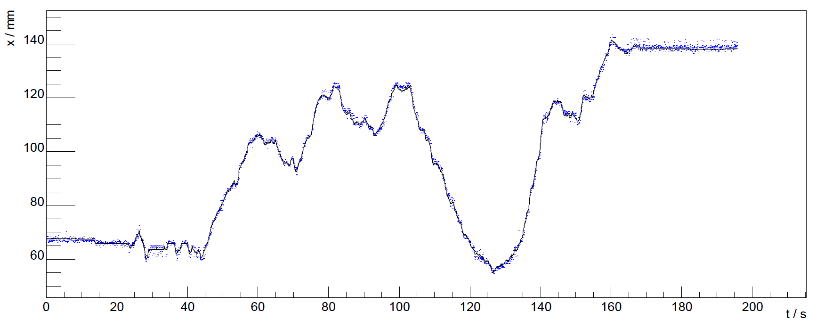C1
γ tracking on the basis of positron emission tomography of particles and gases in bulk solids
Doctoral candidates / Postdocs
Cooperations
B1: comparison with results of radar processes combined with microwave tomography
C3: providing the generic grate system & comparison with DEM simulations
C7: comparison with DEM simulations

Simulated setup of the detector and generic grate system.
Many industrial applications rely on the processing of densely packed and moving granular material. However, the dense particle packing and the opaqueness of the system make it very difficult to obtain bulk internal information experimentally. Methods capable of this are, for example, positron emission particle tracking (PEPT) and positron emission tomography (PET). Since commonly used PET detectors/scanners are very expensive, this project uses techniques from particle physics experiments for the development and construction of a cost-effective PET-like detector system to study in situ the behavior of particles and gases in bulk reactors.

Simulated setup of the detector and generic grate system.
The focus is on studying particle transport within a batch-operated generic grate system (from Project C3), which is inspired by industrial grate firing systems (used for the combustion of wood chips or municipal waste). This is done by placing positron-emitting tracer particles (radioactively marked with 22Na) inside the granular assembly, whose emitted positrons rapidly annihilate with electrons of the surrounding matter to a pair of 511 keV back-to-back gamma rays. Since the tracks of the two related gamma rays are antiparallel, the line connecting the impact positions of the gamma rays on the scintillator must also contain the position of the tracer particle. Thus, the tracer particle position can be determined by calculating the time-of-flight (TOF) differences of the gamma rays or the point of closest approach (POCA) of at least two of these lines.

Photomultiplier and SiPM test setup.
The design of the detector system and the functionality of the reconstruction software will be validated and optimized by Monte Carlo simulations fed by DEM (discrete element method) simulations of the generic grate system from Project C3. Furthermore, the experimentally obtained results of the particle tracking are compared with the results of the coherent electromagnetic approach (radar processes combined with microwave tomography) of Project B1 and will be used to validate the new DEM/CFD framework developed in Project C7.

SiPM array on its readout board.
After studying the particle transport, the gas dispersion (which could be a gaseous fuel) is investigated in a bulk reactor with PET. For this purpose, the gas will be mixed with positron-emitting nuclei. The redistribution of activity within the reactor volume during the dispersion process observed with the PET-like detector system will provide information about the gas dispersion in the void spaces between the bulk particles.

Simulated (black) and reconstructed (blue) DEM path projected onto the x-axis.



